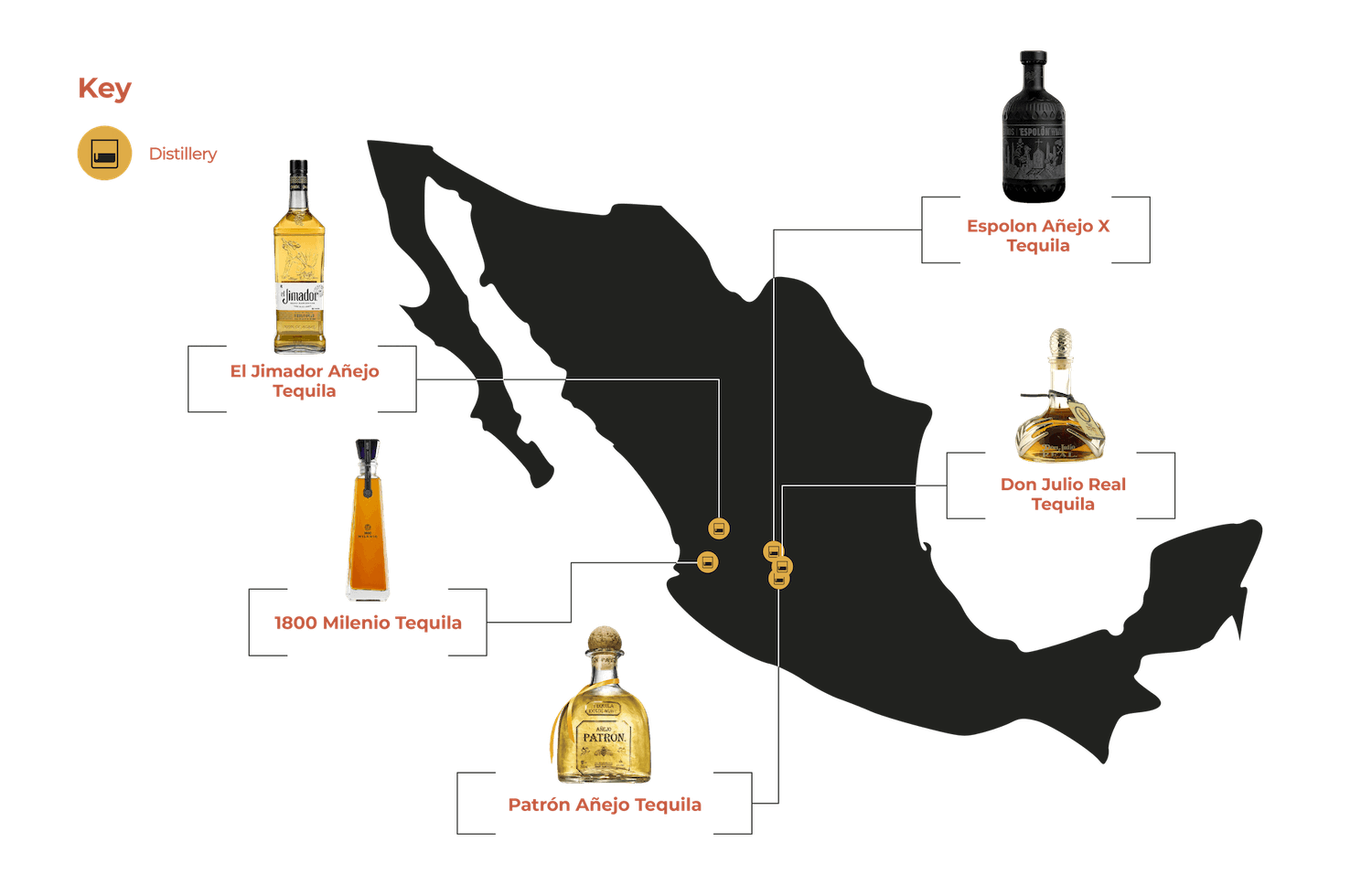Being the most aged varieties of tequila available on the market, añejo and extra añejo tequilas contain by far the greatest depth of complexity and character.
The spirits taste and quality is largely determined by two major contributors, the first being the unaged blanco tequila used as its base, and second, the type of oak barrels it was aged in and for how long it was aged.
If the producer uses a lower quality mixtos tequila, which is a blend of at least 51% blue agave combined with other sugars, as the base then the flavour profile will be far different to one that uses a 100% blue agave tequila.
Similarly, the barrels used for ageing will affect the flavour characteristics imparted onto the resulting aged tequila, as former bourbon barrels, for instance, will impart very different flavours than former sherry casks.
It is almost always the case, however, that añejo and extra añejo tequilas will be made from 100% blue agave as these are more expensive for the producer to make than mixtos tequilas, making them most worthy of being aged by the distiller.
Because of this, añejo and extra añejo tequilas are generally more expensive than the lesser aged reposado or blanco tequilas but this higher price is justified when you consider that only the best spirits are selected for ageing.
Outside of these attributes, it's important to understand that añejo tequilas must be aged between 1 - 3 years, whilst extra añejo tequilas are aged a minimum of 3 years.
Possessing the longest amount of time spent ageing in barrels means that extra añejos are by far the most complex tequilas on the market, made to be enjoyed on their own and explored in greater detail in this article.
Because añejo and extra añejo tequilas are very expensive styles of tequilas to produce and therefore buy, they represent the most premium bottles of tequila available.
All of the large premium brands, including Patrón, Don Julio, and 1800 have their own bottles of well aged tequila, which possess a variety of complex flavours.
Patrón’s standard añejo, which is aged for over 12 months, is golden amber in colour, imparts flavours of oak, honey, vanilla, and raisins, and is known for its smoky finish.
Their bottle of extra añejo, however, builds upon these flavours and shares more oak and vanilla notes, backed by a light agave sweetness and a finish of dried fruits.
Don Julio, on the other hand, ages their bottle of standard añejo for 18 months in American white oak barrels, allowing it to reflect flavours of agave, honey, and butterscotch, followed by a gentle peppery finish.
Remaining in the upper echelon of aged tequilas, 1800 age their standard bottle of añejo for 14 months in French oak, which shares flavours of peppery spice, oak, butterscotch, and vanilla.
If looking for bottles of well aged tequila outside of the premium price point, El Jimador and Espolon both produce quality examples of 100% blue agave añejo that can still easily be enjoyed on their own.
With these representing the biggest brands in aged tequila, the bottles above are all made to be of the highest quality and complexity, making it easy to savour them on their own.
For other bottle options in this category of spirit, explore the products mentioned in this article.
Being the most complex and well crafted bottles of tequila on the market, the well aged añejo and extra añejo styles are made to be consumed on their own either neat or over ice.
Often containing delicate flavours of oak, honey, butterscotch, light pepper, smoke, and agave, blending these products into cocktails or other mixed drinks is likely to mask many of these subtle flavours and ruin the tasting experience.
If choosing to use these bottles of tequila as the basis for cocktails, be sure to use them in those that allow for the true expression of the base spirit to remain at the forefront of the tasting experience.
With this in mind, common examples include the tequila old fashioned, en rosa, or añejo spicy margarita, as these will allow the complex flavours in the aged spirit to shine through.
Considering these bottles are the heaviest-bodied and flavoured examples of tequila on the market, they are often best paired with foods and dishes that contain similarly strong flavours.
By far the best general food pairing option for añejo and extra añejo tequilas is to match them with steaks and other juicy red meats that have also been well marinated or sauced in herbs or spices.
For specific dish recommendations, consider a grilled wagyu steak or lamb shank that has been coated in spices, as these two meats are full flavoured and complement well with a complex aged tequila.
You’ve seen them on the shelves at bottle shops & bars but how much do you really know about tequila & it’s lesser-known relative mezcal? We uncover both of them in our in-depth guide.
Looking to spruce up your mixing game? We’ve put together a quick guide on which of the common supermarket mixers work best with some of your favourite spirits.
You might be familiar with bourbon & Tennessee whiskey but do you know about the other types of whiskey coming out of America? Discover more in this deep dive guide.



